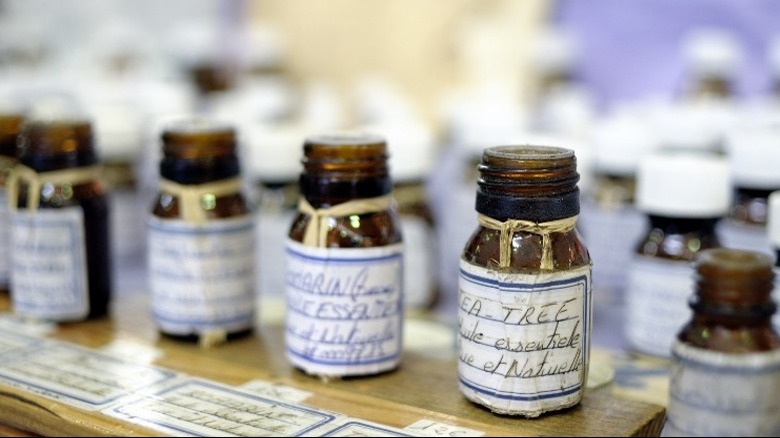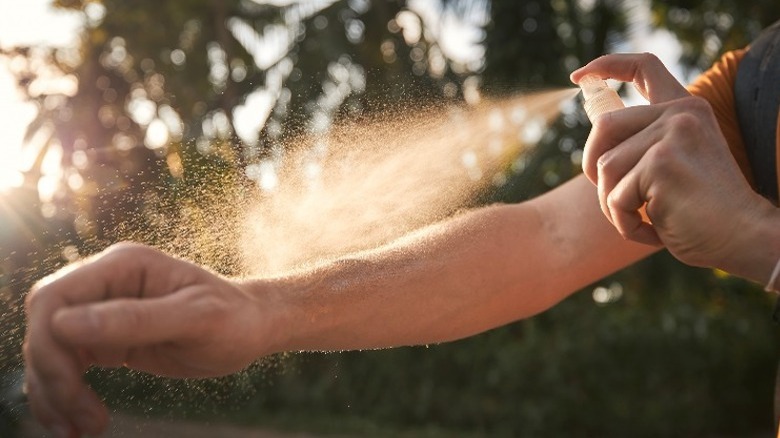Travel Guides Outdoor Adventures Camping
Caroline Harrap
Camping connects us with the great outdoors, and, as we all know, that does wonders for our well-being. Breathing in all that fresh air, spending a night under the stars, and being one with nature is good for the soul. However, we’d probably all draw the line at being one with insects — which is why making your own DIY bug repellent using witch hazel might be something you’d like to try. But the question is, do DIY repellents work?
Well, in truth, the jury is still out when it comes to the effectiveness of homemade remedies. While many people swear by their own concoctions, some entomologists argue that the shop-bought stuff is much better — and they have a point. Insect repellents containing the chemical DEET, developed by the U.S. Army, are among the most effective, according to a 2002 study published in The New England Journal of Medicine. Also, while commercial products are thoroughly tested by the U.S. Environmental Protection Agency (EPA), those made at home aren’t.
Nevertheless, plenty of people choose to make their own anyway, often because they are worried about the chemicals in store-bought repellents. In particular, DEET was once feared to pose health risks ranging from skin irritation to seizures. While the EPA has since declared it safe, provided it’s used correctly, some people prefer to avoid it. Others feel uncomfortable about inhaling the smell of synthetic products.
Step-by-step instructions for your own remedy

Christopher Ames/Getty Images
Unless you’re going to a place with a high risk of mosquito-borne diseases, it may be better to make your own repellent rather than purchase one from the store. If this appeals, all you will need for your concoction is witch hazel (which has bug-repelling properties), distilled water, and glycerin. If you’re vegan, a plant-based glycerin will do just fine. You will also require a tinted glass spray bottle, a quarter measuring cup, a funnel, and a teaspoon.
Start by ensuring you have a clean, dry surface to work on and lay out all the items to make everything accessible. Next, place your funnel into the neck of the spray bottle and pour in a quarter cup (equivalent to around 2 fluid ounces, 60 milliliters, or 4 tablespoons) of distilled water. Follow this with the witch hazel, also known for being soothing on the skin, using a slightly lesser amount. Then, add half a teaspoon of glycerin — renowned for its moisturizing properties.
If you wish, add a few drops of citronella essential oil, often found in commercial bug-repellent products. Around 15 drops to one ounce of distilled water is generally recommended — or half that if using on your face. Other popular essential oils in homemade remedies include eucalyptus, catnip, and clove.
More handy tips for deterring bugs

Jaromir Chalabala/Shutterstock
In any event, all that remains to be done now is to label the bottle with the name, ingredients, and the date made, as it’s easy to lose track of things. Because this is a homemade product, it’s best to make your formula in small batches and aim to use it within a month or so. One other thing to bear in mind is that although DIY bug repellents aren’t deemed as effective as store-bought options, frequent reapplication is thought to improve their efficacy.
Beyond that, just covering up with cool, cotton clothing will offer at least some protection. You may also wish to try burning citronella candles outside your tent. Like cucumbers and orange peels, there are some foods that can help keep bugs away — yes, really! In addition, you could also consider investing in a canopy made from a mesh net to keep out any unwelcome intruders.
Lastly, it’s worth remembering that insects are especially prevalent from dusk to dawn and are big fans of water. So, if you’re prone to getting bitten, you may wish to steer clear of a sundown stroll by the lake. They are also drawn to artificial light. However, armed with your bug repellent, whether DIY or shop-bought, you will at least stand some hope of keeping the canny little critters at bay. That way, you can focus on the more enjoyable aspects of reconnecting with nature.

